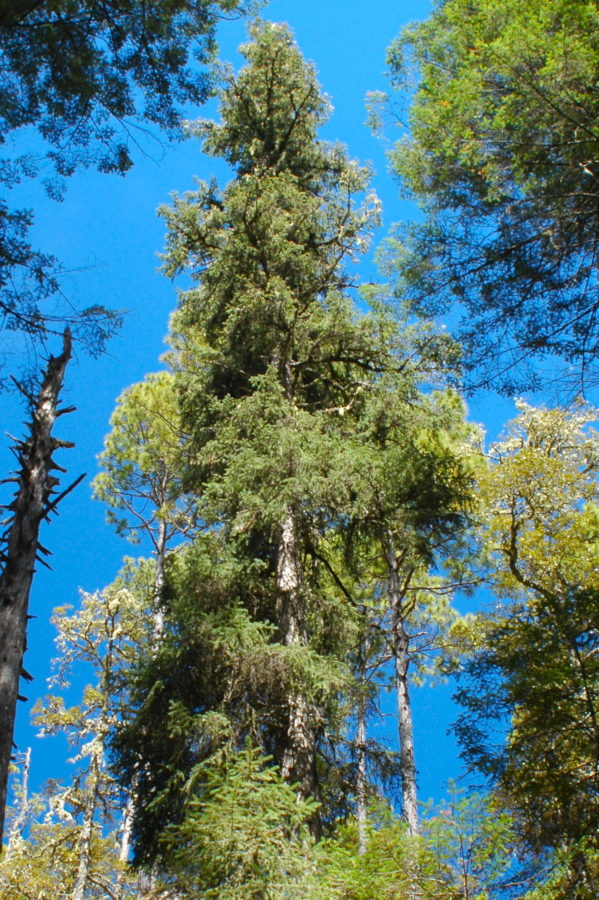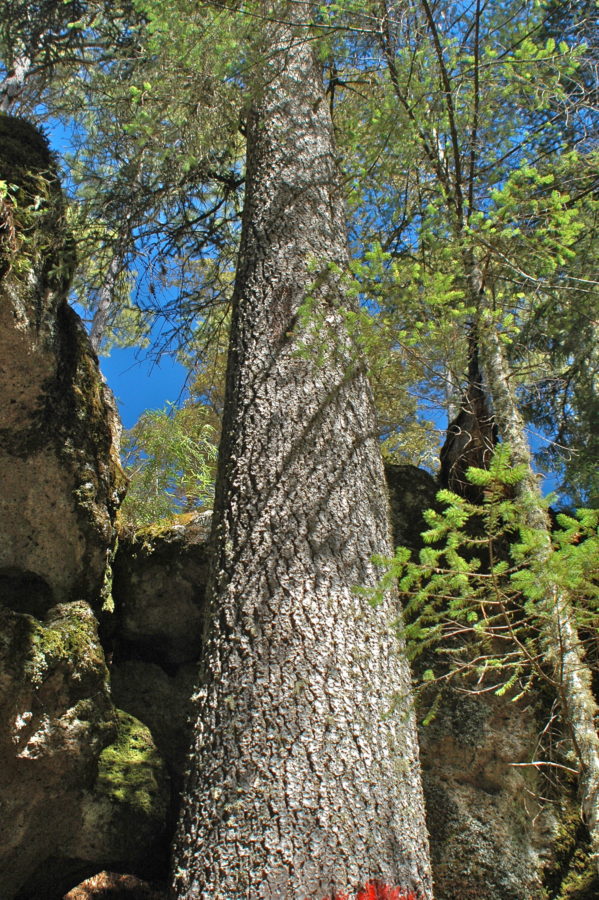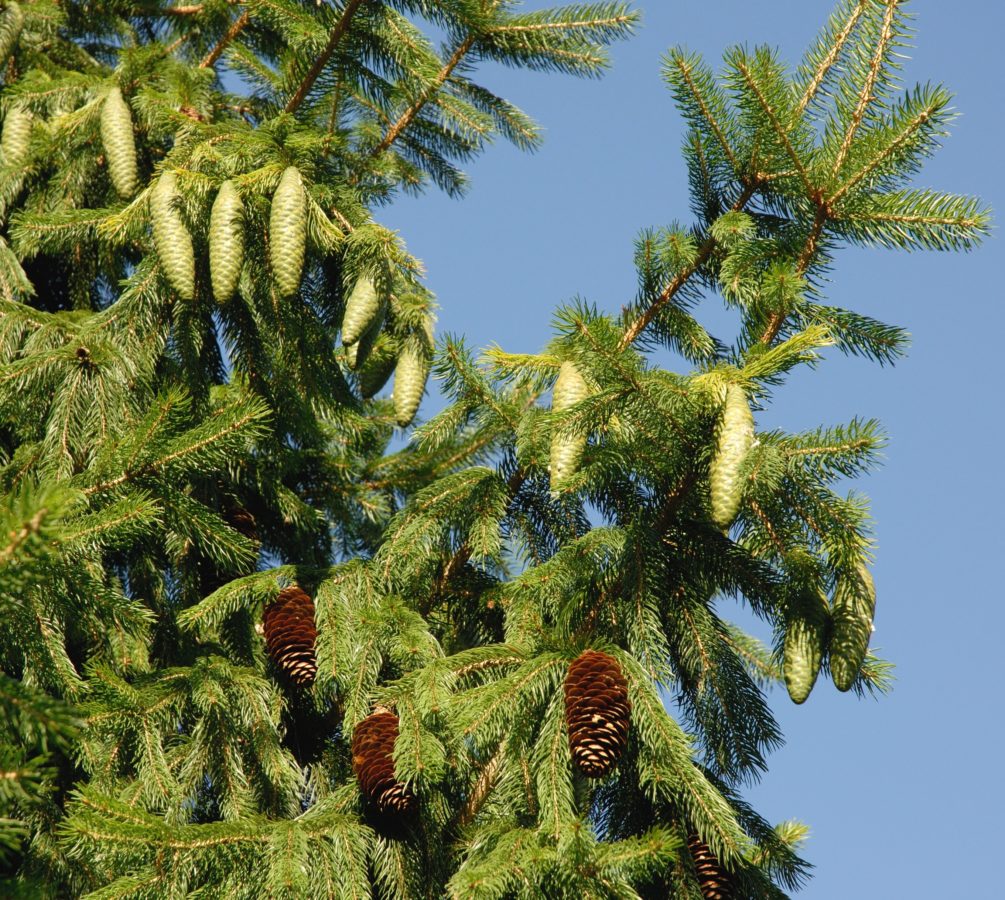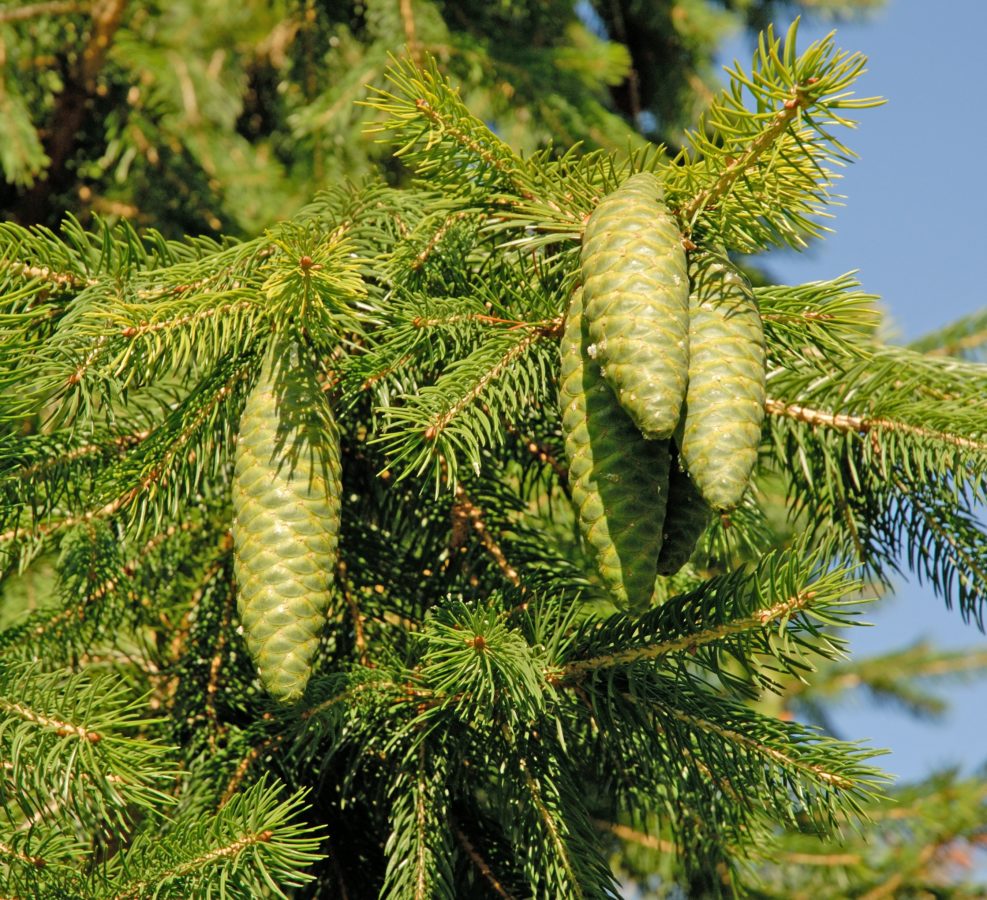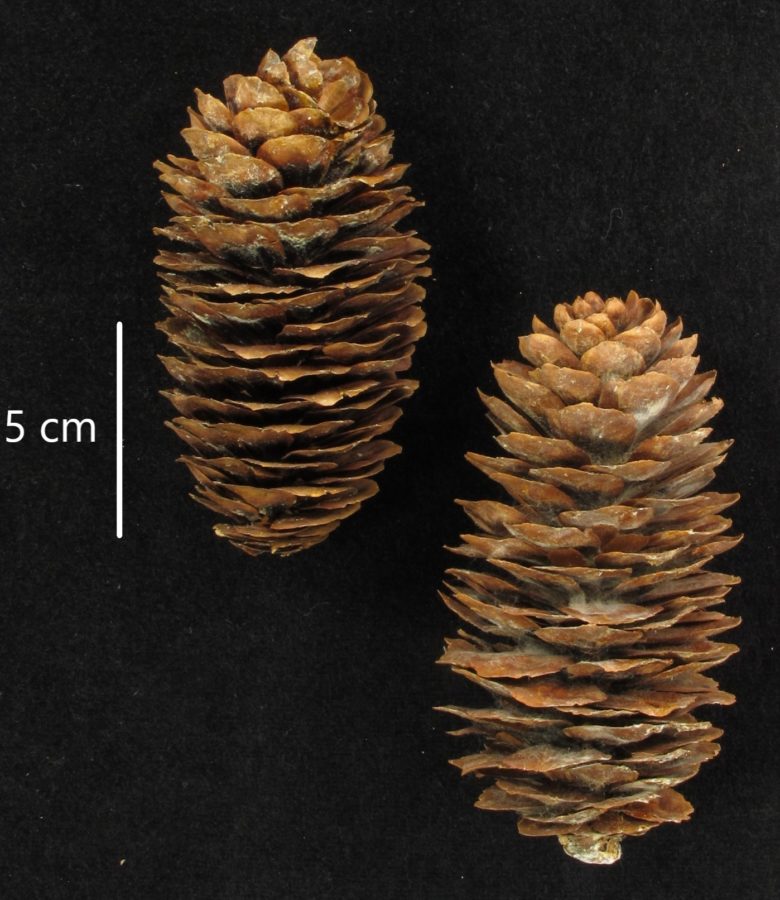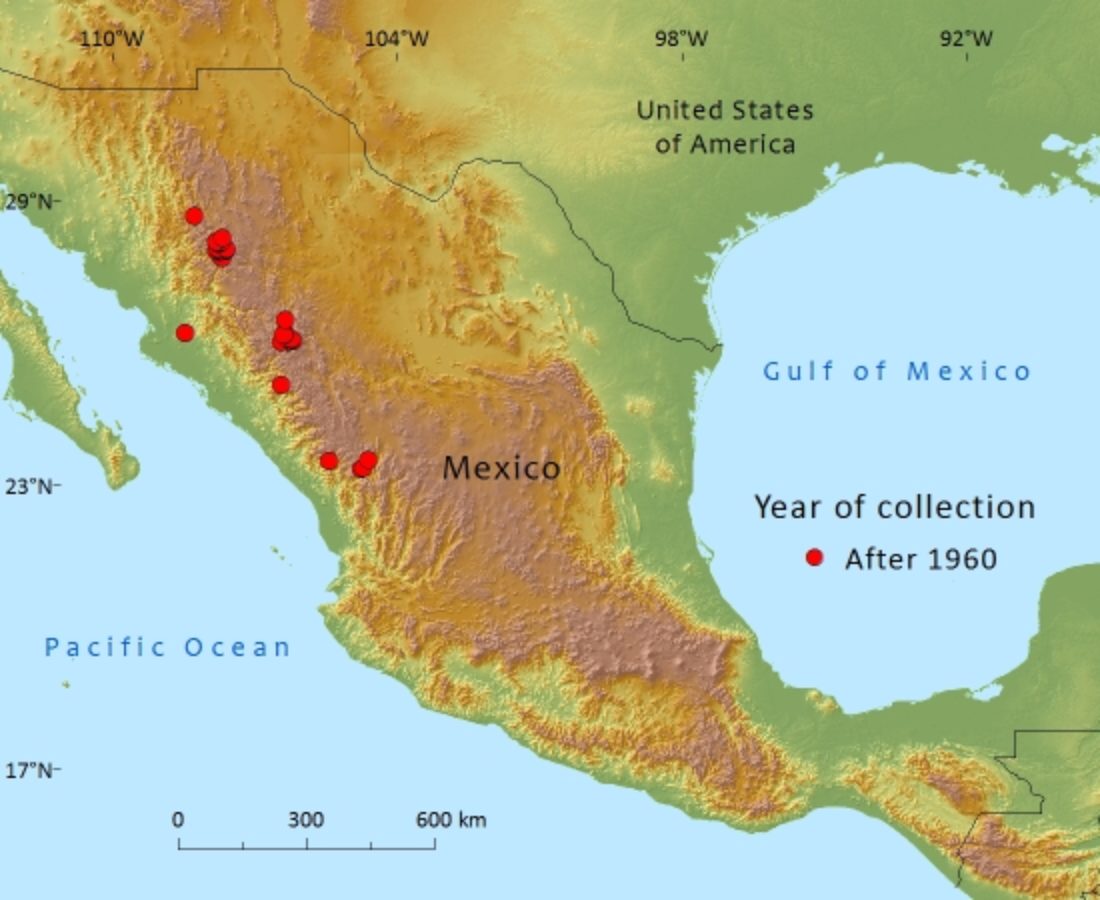Pinaceae
Picea chihuahuana
Endemic to México where it is severely fragmented due to deforestation and increasingly threatened by poor regeneration as well as warming and drying associated with climate change.
References and further reading
- Fulé P. Z., J. Villanueva-Díaz, & Ramos-Gómez, M. (2005). Fire regime in a conservation reserve in Chihuahua, Mexico. Canadian Journal of Forest Research 35(2): 320-330.
- Gordon, A. G. (1968). Ecology of Picea chihuahuana Martínez. Ecology 49: 880-896.
- Jaramillo-Correa, J.P., J. Beaulieu, F.T. Ledig & Bousquet, J. (2006). Decoupled mitochondrial and chloroplast DNA population structure reveals Holocene collapse and population isolation in a threatened Mexican-endemic conifer. Journal of Molecular Ecology 15(10): 2787-2800.
- Ledig, F., V. Jacob-Cervantes, P. Hodgskiss & Eguiluz-Piedra, T. (1997). Recent evolution and divergence among populations of a rare Mexican endemic, Chihuahua Spruce, following Holocene climatic warming. Evolution 51(6): 1815-1827.
- Ledig, T., M. Mapula-Larreta, B. Bermejo-Velasquez, V. Reyes-Hernandez, C. Flores-Lopez & Capo-Arteaga, M.A.. (2000). Locations of endangered spruce populations in Mexico and the demography of Picea chihuahuana. Madroño 47(2): 71-88.
- Martínez, M. (1953). Las Pinaceas Méxicanas. Instituto de Biología, México City.
- Narvaéz-Flores, R., J. Sanchez-Cordova & Olivas-Meza, A. (1983). Distribucion y poblacion de Picea chihuahuana. Nota Técnica No. 6, Centro de Investigaciones Forestales del Norte, Instituto Nacional de Investigaciones Forestales, Secretaría de Agricultura y Recursos Hídraulicos
- Secretaría de Medio Ambiente y Recursos Naturales. 2010. Norma Oficial Mexicana NOM-059-SEMARNAT-2010. Protección ambiental de especies nativas de México de flora y fauna silvestres: Categorías de riesgo y especificaciones para su inclusión exclusión o cambio-Lista de especies en riesgo. Diario Oficial de la Federación: 1-78.
- Thomas, P. & Farjon, A. (2013). Picea chihuahuana. In: IUCN 2013. IUCN Red List of Threatened Species. Version 2013.1. <www.iucnredlist.org>. Downloaded on 13 July 2013.
- Taylor, R.J., T.F. Patterson, & Harrod, R.J. (1994). Systematics of Mexican Spruce - Revisited. Systematic Botany 19: 47-59.
- Ledig, T., G. Rehfeldt, C. Saenz-Romero and C. Flores-Lopez (2010). Projections of suitable habitat for rare species under global warming scenarios. American Journal of Botany 97:970-987.
- Ortega-Rosas, C.I., M.C. Peñalba and J. Guiot (2008). Holocene altitudinal shifts in vegetation belts and environmental changes in the Sierra Madre Occidental, northwestern Mexico, based on modern and fossil pollen data. Review of Palaeobotany and Palynology 151 :1 – 20 .
- Mendoza-Maya, E., J. Espino-Espino, C. Quinones-Perez, C. Flores-Lopez, C. Wehenkel, J. Vargas-Hernandez & C. Saenz-Romero (2015). Proposal for conservation of three Endangered species of Mexican Spruce. Rev. Fitotec. Mex 38(3):235-247.
